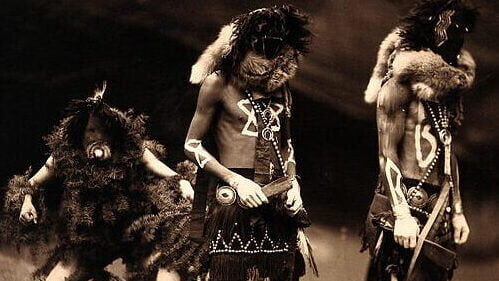|
Getting your Trinity Audio player ready... |
Origins and Early Life

Native Americans, the indigenous people of North America, have a rich history that dates back thousands of years. Archaeological evidence suggests that their ancestors migrated from Asia via the Bering Land Bridge during the last Ice Age, around 15,000 years ago. These early inhabitants developed diverse cultures, languages, and societies, from the nomadic tribes of the Great Plains to the complex civilizations of the Southwest, such as the Ancestral Puebloans.
Early Contact with Europeans

The arrival of Europeans in the late 15th and early 16th centuries marked the beginning of profound changes for Native American societies. Christopher Columbus’s arrival in 1492 initiated centuries of exploration and colonization. Early interactions were often marked by trade and cooperation, but they soon turned exploitative and violent as European powers sought to expand their territories.
Marginalization and Land Dispossession

As European settlers increased, Native Americans faced systematic dispossession of their lands. The establishment of the British colonies and later the United States led to numerous treaties that were often unfairly negotiated and frequently violated.
The Indian Removal Act of 1830 was a significant turning point, forcibly relocating thousands of Native Americans from their ancestral homelands to designated “Indian Territory” west of the Mississippi River. The infamous Trail of Tears, which resulted in the deaths of thousands of Cherokee, Choctaw, and other tribes, epitomizes this brutal policy.
Cultural Suppression and Assimilation Policies

Throughout the 19th and early 20th centuries, U.S. government policies aimed to assimilate Native Americans into mainstream American culture. The Dawes Act of 1887 divided communal tribal land into individual allotments, undermining traditional communal living and leading to significant loss of land.
Native children were sent to boarding schools where they were forced to abandon their languages, traditions, and identities in favor of European-American customs.
Struggles for Rights and Recognition

Despite these challenges, Native Americans have continuously fought for their rights and recognition. The early 20th century saw the formation of advocacy groups like the Society of American Indians. In 1924, Native Americans were granted U.S. citizenship, but many continued to face discrimination and exclusion.
The Civil Rights Movement of the 1960s and 1970s was a catalyst for Native American activism. The American Indian Movement (AIM), founded in 1968, sought to address issues such as police harassment, poverty, and treaty rights. Notable events like the occupation of Alcatraz Island (1969-1971) and the standoff at Wounded Knee (1973) brought national attention to Native American issues.
Contemporary Challenges and Progress

Today, Native Americans continue to face significant challenges, including poverty, unemployment, and health disparities. According to the U.S. Census Bureau, as of 2020, the poverty rate for Native Americans was 24.2%, compared to 10.5% for the general population. Health issues such as diabetes, alcoholism, and suicide are prevalent, partly due to historical trauma and inadequate healthcare access.
Despite these ongoing struggles, there have been significant strides in reclaiming sovereignty and cultural revitalization. Many tribes have gained greater control over their lands and resources through legal battles and negotiations. The Indian Self-Determination and Education Assistance Act of 1975 allowed tribes to manage their own education and social service programs.
Cultural revival is also evident, with efforts to preserve and teach indigenous languages, traditions, and crafts. Powwows, traditional gatherings celebrating Native culture, have gained popularity, and Native American artists, writers, and scholars are making significant contributions to contemporary culture.
Conclusion

The history of Native Americans is one of resilience and enduring strength. From their ancient origins and early interactions with Europeans to their struggles against marginalization and cultural suppression, Native Americans have continually fought to preserve their identity and rights.
Today, while they still face many challenges, there is a renewed sense of hope and empowerment as they reclaim their heritage and assert their sovereignty. Understanding and acknowledging this history is crucial for fostering respect and equality for Native Americans in contemporary society.
Images used in this article are for graphical representation only.
Discover more: Click here















